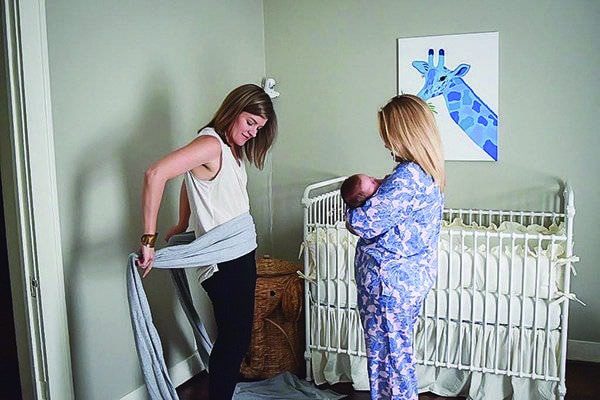In the first 6 weeks postpartum, your body is doing a lot of healing and adjusting to your new lifestyle. For women who are missing the ability to exercise like they used to, it can be a difficult time. There are several things you’ll need to be aware of before returning to regular exercise, including:
- How your pelvic floor is healing from birth
- How to release tension in your pelvic floor to return to sex without pain
- Checking for diastasis recti and pelvic floor function and tone
- Information on how to strengthen your core and pelvic floor after pregnancy and birth
- C-section scar massage and why it’s important
- Any symptoms you may be experiencing and where to go if you suspect you have a prolapse or are experiencing incontinence or pelvic pain
These items all can be discussed at your 6-week checkup, but they aren’t always conversations that are initiated by your doctor. At that appointment, all your doctor is really checking for is that you’re on track in the healing department and nothing looks out of the ordinary. Unfortunately, that means many new moms are just diving back into what they used to do, without realizing they are fully healed. Knowing what to ask about will help your doctor advise you on the appropriate exercises.
There are some key moves that you can do in the postpartum period — and especially in the first six weeks — that can help you return to exercise with more mindfulness and ease. Here are six exercises that will set you up for a strong return to working out and will ultimately help you feel more confident in and reconnected to your body in the postpartum period.
6 Exercises During the 6 Weeks Postpartum
1. Connection Breath
The connection breath is the first thing I have clients work on in the postpartum period, because it’s something you can do almost immediately after birth. Throughout pregnancy, your core canister (the area from the ribs to the pelvic floor, including the abs) is stretched and changed. This means a natural change in muscle length, tension, and breathing patterns. This is a big reason why my pregnant clients are always working on strengthening the muscles in and around the core canister, as well as breathing patterns to keep a wide variety of movement. The connection breath in the postpartum period is a vital part of recovery to start reconnecting and strengthening the core and pelvic floor muscles after birth.
I recommend 3–6 slow, intentional breaths one or two times a day. You’ll want to do this almost every day to be able to see and feel changes happening.
Side-Lying Windmill
The side-lying windmill is a staple in my pregnancy and postpartum programs because it is a fantastic exercise for loosening up tight shoulders. Postpartum, the windmill is particularly helpful since you spend A LOT of time curled over a baby rocking, snuggling, and feeding. I suggest 10–12 of these per side once a day.
Adductor Rock Back
In addition to spending your days curled over a sweet baby, you also likely spend a lot of time sitting. Adductor (inner thigh muscles) tightness can be common in the postpartum period and can also play a role in pelvic pain or pelvic floor muscle tightness to an extent. The adductor rock back is awesome for releasing inner thigh tightness and is one of my favorite exercises because it feels SO good. Try 20 rocks per side once a day.
Banded Glute Bridge
Okay, sure, you could start with a regular ol’ glute bridge, but you’ll get a little more bang for your buck by adding a mini band. This is a safe way to load this exercise in the 6 weeks postpartum and can be particularly helpful for strengthening the glutes and outer hip/thigh muscles. Try 10–12 of these a few times a week.
Bench Tap Squat
As a mom, you’re also getting up and down a lot during the day, which is where the bench tap squat comes into play. This is a great lower impact exercise to start in the early days postpartum that will allow you to reconnect to your body while performing a task you do every day. I suggest clients in the very early postpartum period match this exercise with breathing — exhaling as they begin to lower to the bench and continuing that exhale throughout the movement. Try 10–12 of these a few times a week.
Kneeling Hinge
Another true-to-life exercise is the kneeling hinge, a vital part of getting up off the floor. These are great for strengthening the glutes and a good precursor to deadlifts and squats. You might have already been doing deadlifts and squats before pregnancy, but this is a fantastic exercise to help you re-introduce the movement in a way that feels productive and safe. Try 10–12 of these a few times a week.
All in all, you’re doing a lot more movement than you give yourself credit for in those first six weeks postpartum. While it is super important to give your body time and space to rest, incorporating gentle movements that intentionally reconnect you with your body can help you return to exercise safely and feel stronger in your everyday life.


